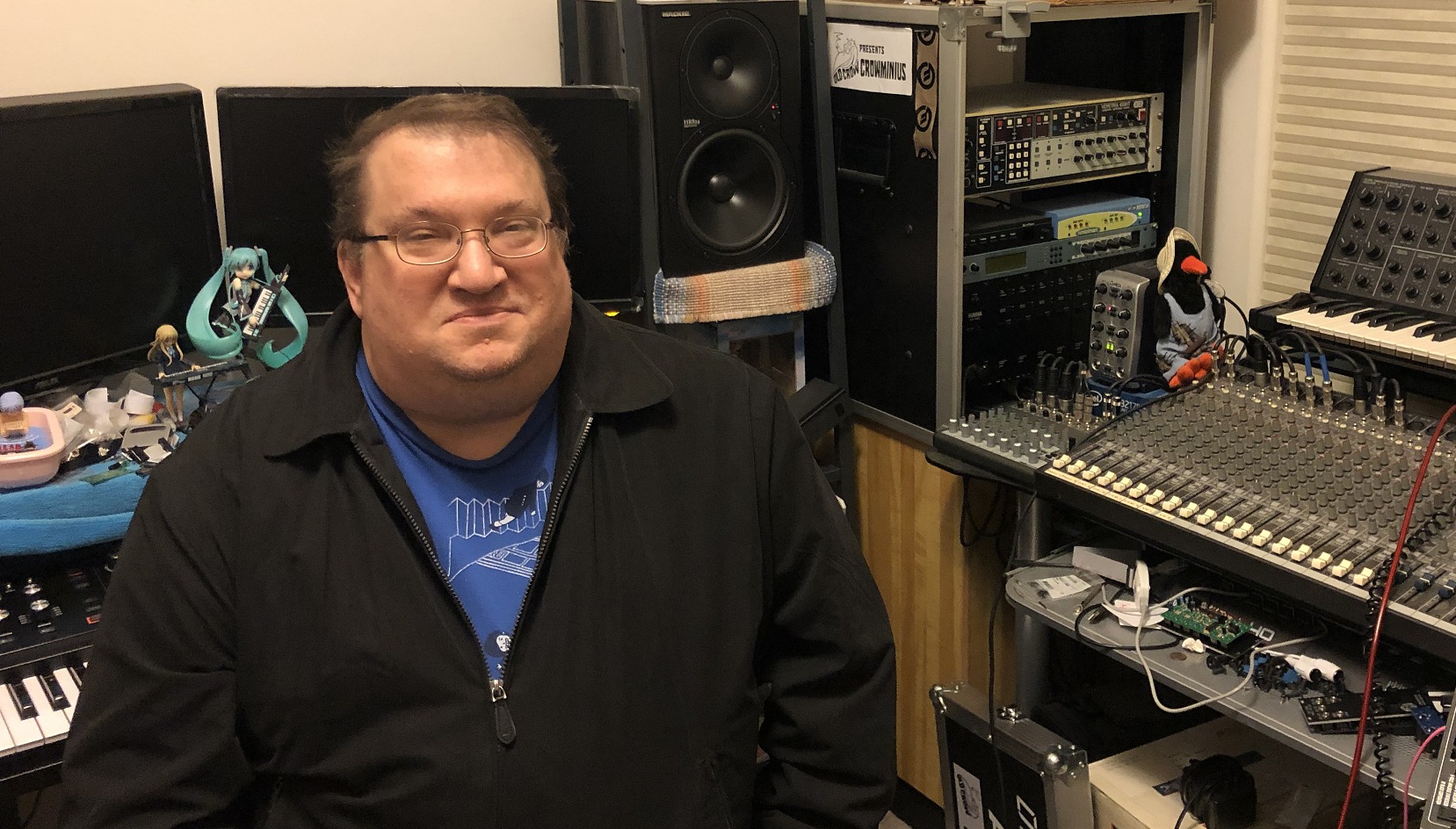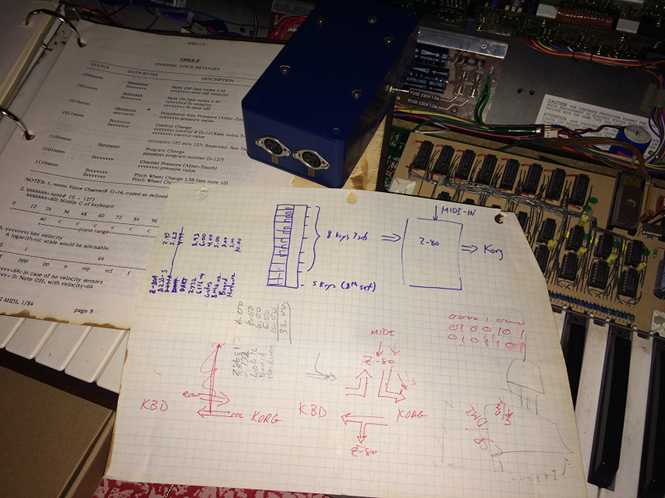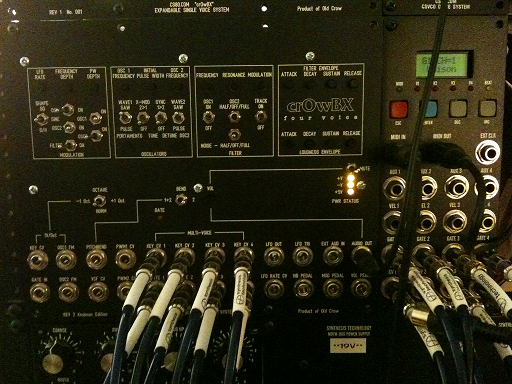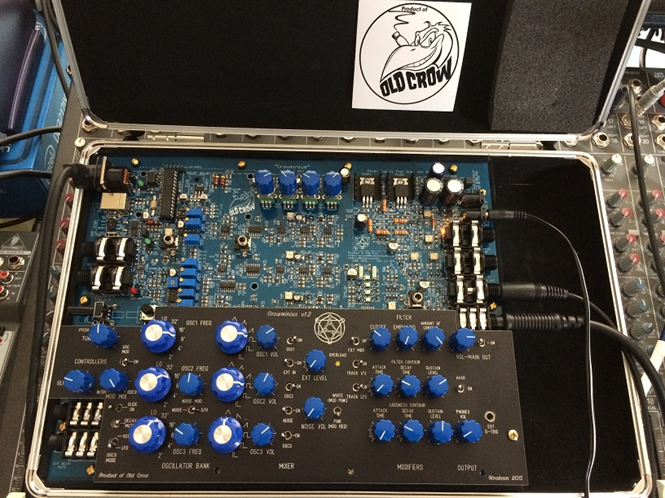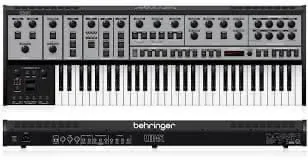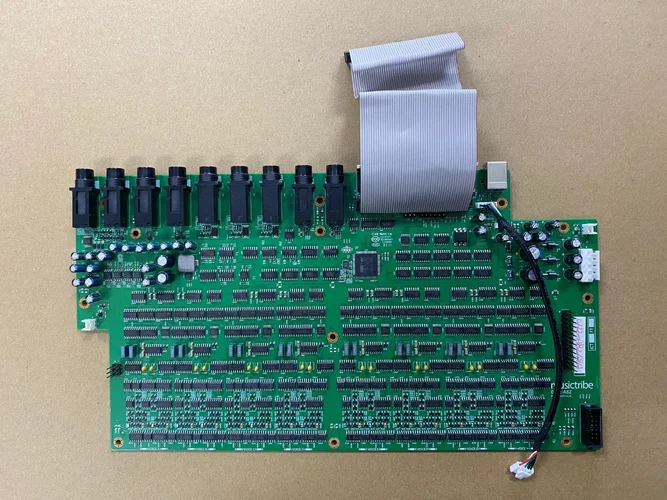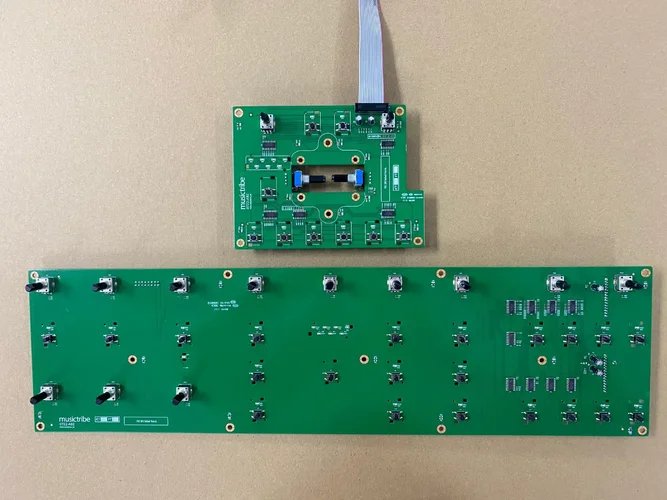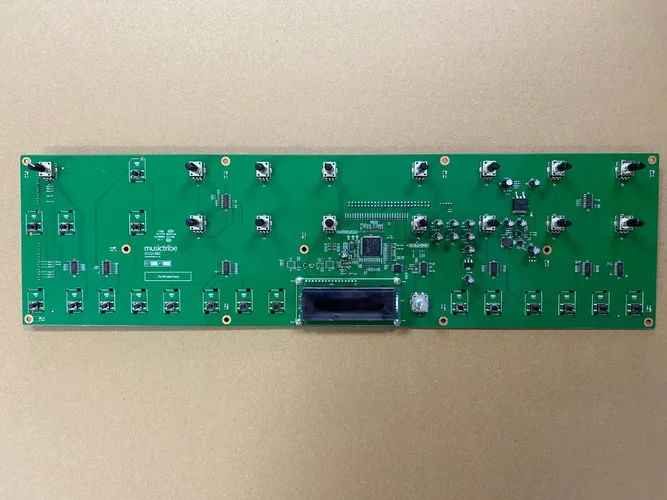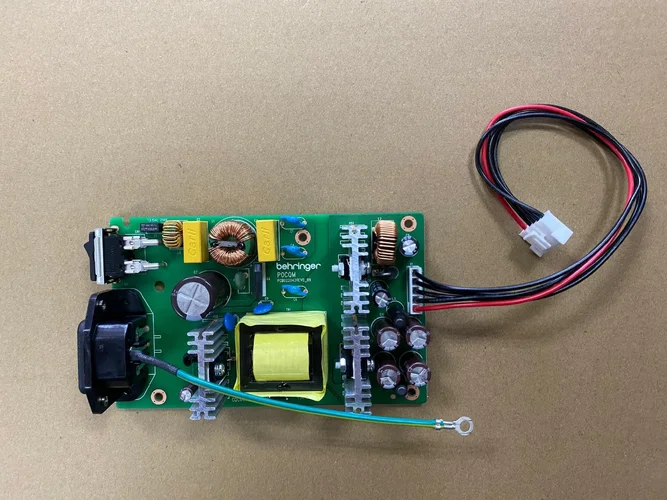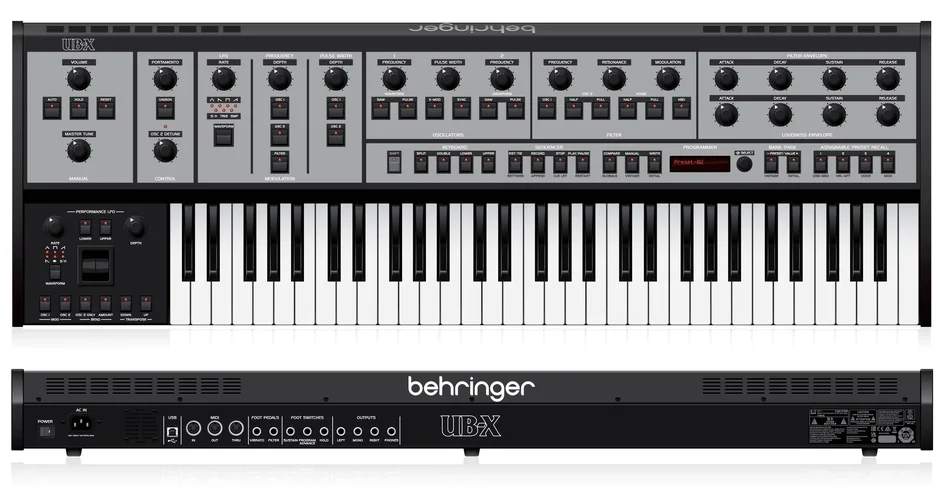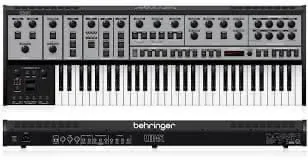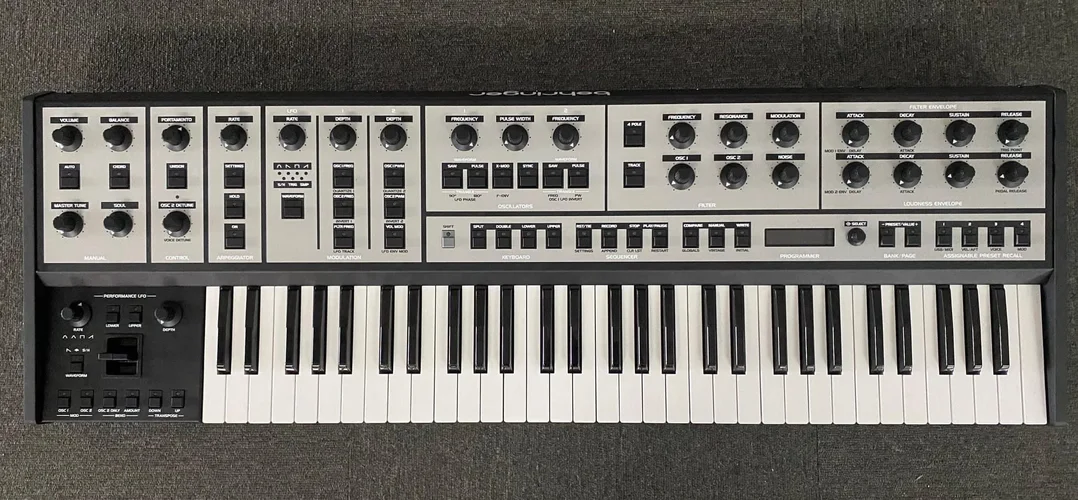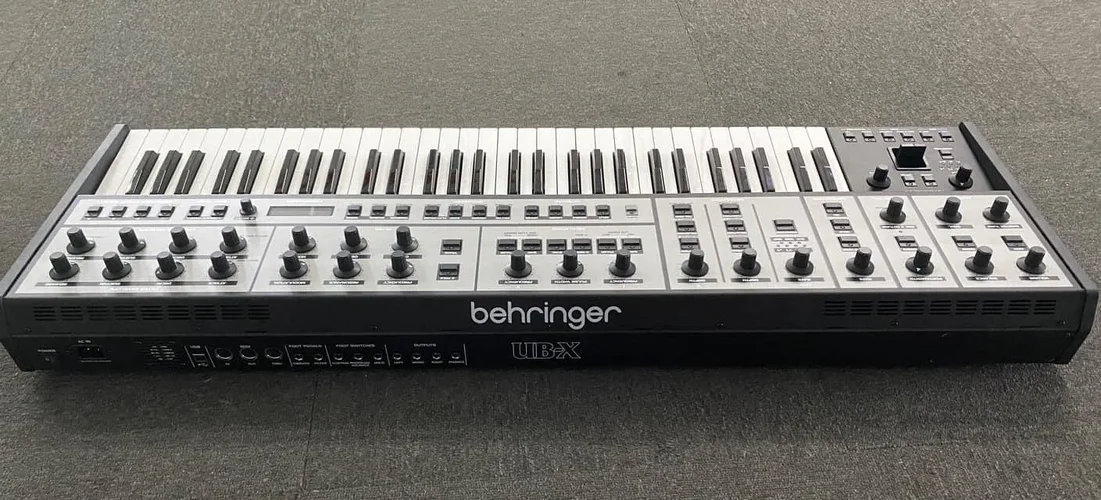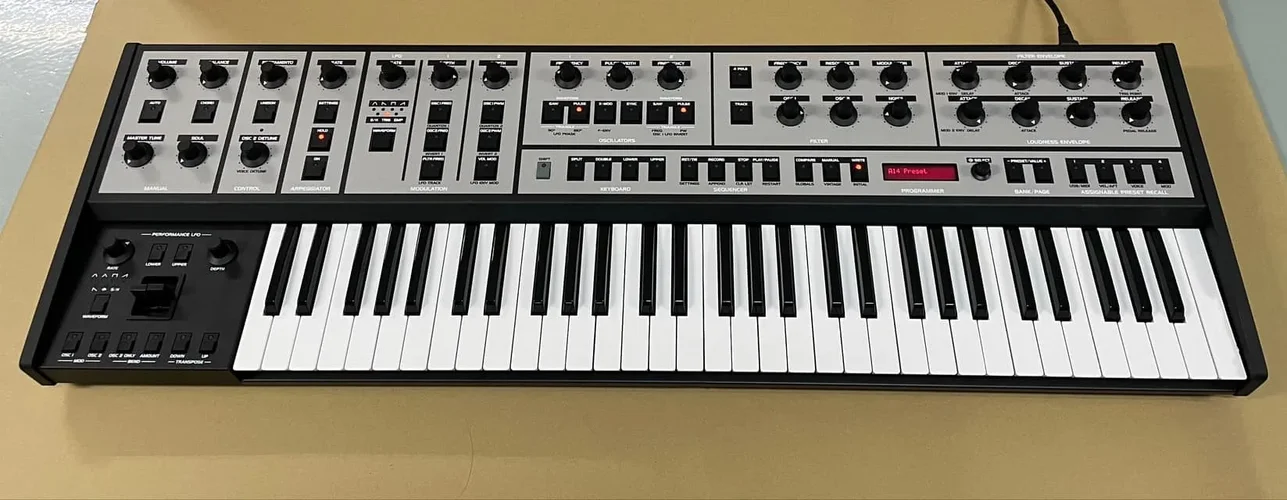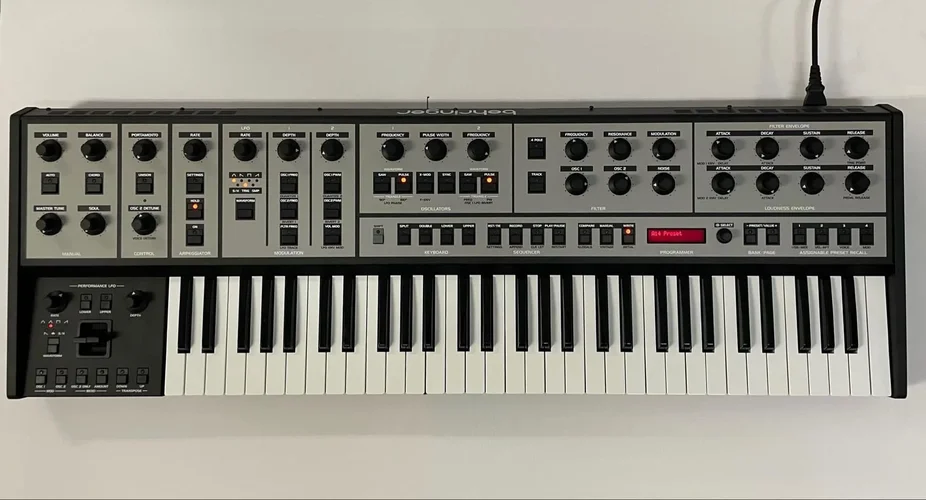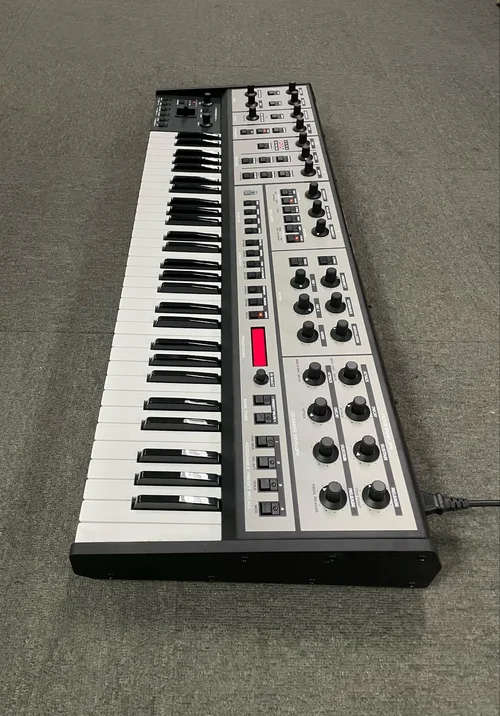Ein älterer Facebook Eintrag vom 10.05.2022 (
Link), der zeitlich sogar noch vor den Threadstart gehört. Ich hole es hier nach, vielleicht interessiert es den einen oder anderen.
Scott “Old Crow” Ryder joins the UB-X synthesizer development team.
We’re extremely proud to have gained another analog synthesizer icon to join our ever-growing synth engineering team. Scott has decades of analog synthesizer experience under his belt and built his own OB-X, CS-80 and many more. Check out his website
http://www.cs80.com/.
Scott is reading here, and you may want to send him some love

But let’s listen to his fascinating story:
“As a child of mid ‘60s, the years of my youth went through that strange 5-year gap where electronics hobbyists transitioned from shortwave radio to homebrew computing. Living in that interesting time made me somewhat of a hybrid understudy of both analog and digital electronics. I was already being trained in piano but seeing performances like Virgil Fox’s masterful electronic organ recital and later Michael Iceberg’s “Iceberg Machine” one-man synth band performances at Disney World when he was set up in the Tomorrowland Terrace had me going: “That! I want to do that!”
“That” of course would be me surrounded by these sleek electronic music synthesizers and playing those languid, spacey notes like the soundtrack to some not-yet-made sci-fi films. Of course, when a single polyphonic synthesizer in 1980 cost the same as my car, that dream would have to wait a few years as I went through engineering school. My father had the good grace to purchase a Paia P-4700j synthesizer kit that began a long friendship with Paia’s founder John Simonton. I probably learned more about analog and digital musical electronics putting that all together from Feb. to May 1980 than any other instance of my schooling. Sadly John is no longer with us, but he put my refurbished P-4700j in his Paia “Hall of Fame.”
https://paia.com/hallofam/oldcrow/
1983 is when the machine that would herald the (temporary) end of analog synthesizers as we knew them happened - the Yamaha DX7. I had already managed to buy a Korg Polysix at the closeout price of US$800 in 1984 but getting the US$2k needed for a DX7 meant taking out a loan and hoping the part-time work I did at a local electronics shop would cover it. Somehow, I managed and had this nice pairing of the DX7 with the Polysix except one had MIDI and one did not.
Not yet, I should say. In the fall of 1985, I built a MIDI retrofit for the Polysix. MIDI was new then and figuring out the nature of such a circuit was interesting. I decided to simply install a keyboard switch matrix in parallel to the key bed and that way the keys and the MIDI would work together without any issues. I used a Zilog Z8 microcontroller as it was what we used at the electronics shop. That shop, Temp Inc., was a real boon to my early engineering years as I could tape out a board and etch it in their board shop. This was just before I started using PCB CAD in 1988: tape out was just that: black tape on vellum that was photographed in a UV light box to create the artwork negative. Of course, the boards weren’t plated through, silk-screened or solder masked, but they were circuit boards and they did just fine. In the below image a hand-etched board can be seen, with 121 wires creating the keyboard matrix that the incoming MIDI messages would operate. It worked just fine with the DX7.
Of course, as a piano player I missed that weighted key action and now with a full-time job at Temp in 1986 I was able to invest in the core of my keyboard setup that comprised a Yamaha KX-88, which I still use to this day, a Yamaha TX816, and one of Bob Yannes’ wonderful Ensoniq Mirage rack units. With the addition of a digital reverb, harmonizer and some effects pedals, I finally had something I could call a synthesizer rig, and made enough music for an album:
https://www.last.fm/music/Scott+Rider/The+Dichotomy+of+Time
In the 1990s, older gear started to need servicing. The Polysix battery was notorious for compromising the patch manager circuit and given the number of folks having issues I decided to make an entire new board. I would continue to do this for a number of machines where the original board or board started to fail. The new boards meant all new parts and avoiding frequent failures as old parts individually started failing. This created a new problem: many analog synthesizers of the 70s, 80s and 90s resorted to custom ICs in order to deal with the complexity of the sound engine at a rational level. This is where my favorite engineering pastime was born, I was going to become a “vintage synthesizer archaeologist.” Analog was new again, and the now-vintage market started going up and up. A Minimoog in 1992 one could have for $750, in 2002 it was $3,000. More than ever keeping the old machines running was a worthwhile effort.
In the early 2000s, I managed to purchase my still-favorite analog synthesizer - the Yamaha CS80. I would not be able to afford one today, which is why I spent several years perfecting what I call “discrete equivalent circuits” that replace the Yamaha custom ICs. This was necessary as I had only one CS80 and I wouldn’t likely find another one, hence I had to keep this one alive. A CS80 has 210 custom ICs and 70% of those are VCAs but that is how Yamaha did it in those days. If a modulation routing needed a level control, they provided one. Then they repeated it eight or sixteen times for each route. This is why the instrument has 40 circuit boards, which are exhibited “A” in my book “Why They Built Things the Way They Did, and Why They Will Never Build Them That Way Again”. The CS-80 is a beautiful beast and entirely a product of the era in which it was made.
I made the filter which turned into a 5U module called the MOTM-480. A later revision using Coolaudio V2164s in place of the lamentably obsoleted CA3280 turned out to be even better, I called it the M480 MkII or RR480 in honor of my friend Robert Rich who uses them frequently. I’ve made the VCA, the VCO, the EGs and I had everything ready for the day the CS80 needed them.
It was about this time (2012), I was reviewing other vintage machines I’d like to have, but market pricing drove the ability to buy right out. I’d already wanted an OB-X, simply because it had that deep, glassy booming power that was in a different sonic sphere than Moog or Yamaha. I looked online for prices, which turned out to be $7000 for a broken one. Well eff that, I said, I’ll just make a 4-voice OB-X of my own. No programmable presets even though I could do it, I was mainly after that sound. It took 4 months, but I had my CrowBX, and it is awesome.
I also made a Minimoog for a friend who lost theirs in hurricane Katrina called Crowminus.
I always wanted to build the machines that make these wonderful tones, and I want to build them in such a way they can be afforded by most anyone. That is why I am here now as a part of Music Tribe and Behringer, because their vision matches my vision. I’m very excited that Behringer is designing their CS-80 version called DS-80 and I’ll surely team up with John Price who’s leading that project.
I have now started to work on the new Behringer UB-X, which will greatly benefit from my CrowBX experience. I know the sound, I know the circuits, I will get it done and I absolutely love it.”
- Scott “Old Crow” Rider
